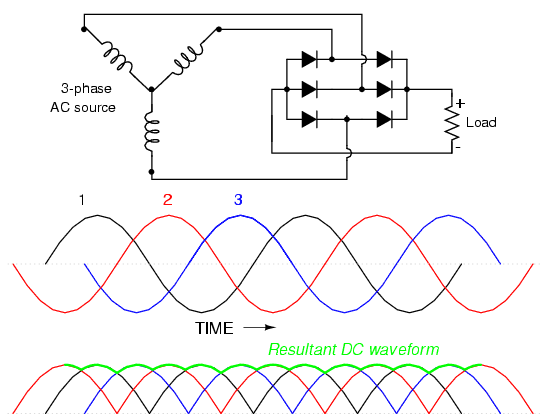How your typical cars electrical generation system works is a good deal more complex than most people understand it to be.
The three phase alternator does indeed produce three sinusoidal voltages each 120 degrees apart and the three phase rectifier taps off the peaks of those waves when the voltage is greater than the regulated voltage.
That may appear, as you have questioned, that we are not using the full power available from the alternator. However it is not that simple. You can not consider the alternator as a stand-alone power source like a battery or power supply that has a fixed input source.
An alternator converts mechanical energy that it draws from your engine and converts it into electrical power. How much energy it needs to take, and how much it loads down your engine, is dictated by how much electrical power you take out of the coils.
Current is indeed only drawn from each phase of the alternator during the high point in it's voltage cycle. However, that also means, during the rest of the cycle, the coil pulls no power from the engine.
This means the power transfer from the engine to your electrical load is also rectified through the rectifier with no significant losses other than those inherent in the voltage drops across the diodes, and the efficiency of the alternator itself.
Further, alternators are not permanent magnet dynamos. The magnetic field the coils turn in, is created by the field coil, an electromagnet if you will. The current that is fed through that coil is what determines how much voltage is produced by the alternator.
When you turn the key in the ignition, you are no doubt aware that there are two spots. The first one connects the battery to the electrical system and may be labelled "accessories". The second spot is labelled "ignition" and this one connects the alternator field coils, and whatever engine controllers your more modern car may have. The ignition light on your dashboard, traditionally, is in series with the field coil. It will be lit at this point because the coil is receiving max current and will go out when the engine is started and the alternator begins producing power and the field current is reduced.
The field coil current is controlled to keep the output voltage a few volts above the battery voltage over the entire operating speed range of the engine and the electrical load applied to the system.
As the engine speeds up, or you turn off the window defogger, the field current reduces to keep the voltage within the required range. This is a very efficient system since there are no losses incurred to "drop" any excessive generated voltage. Further, it also means the power taken from the engine is constant for any given electrical load.
The power taken from the engine also causes the engine control system to compensate. When idling, if the electrical load is high, it will tend to drag the engine slower. The idle or engine controller will advance the idle speed to create more power to compensate. When cruising along, its the drivers foot that does the compensation.
As for whether it is a current or voltage source, it is an oversimplification to think of it that way. It is actually a voltage regulated power convertor.

